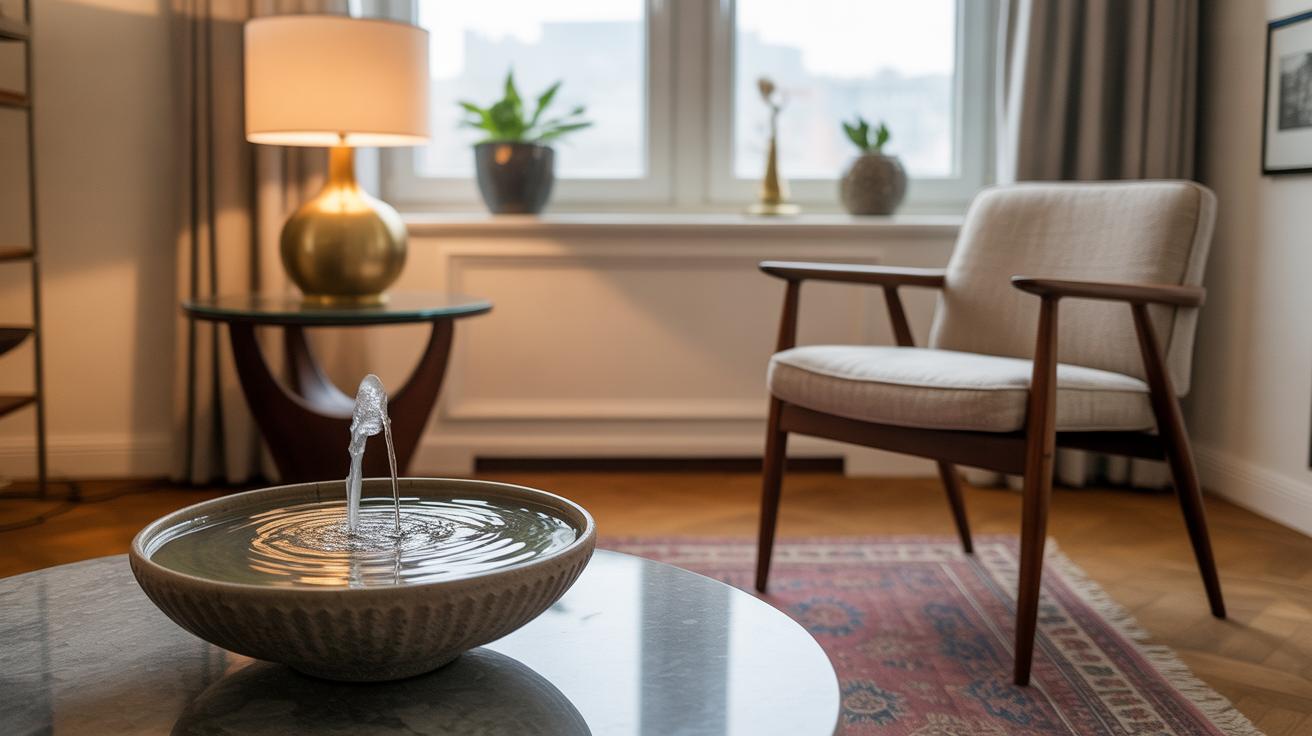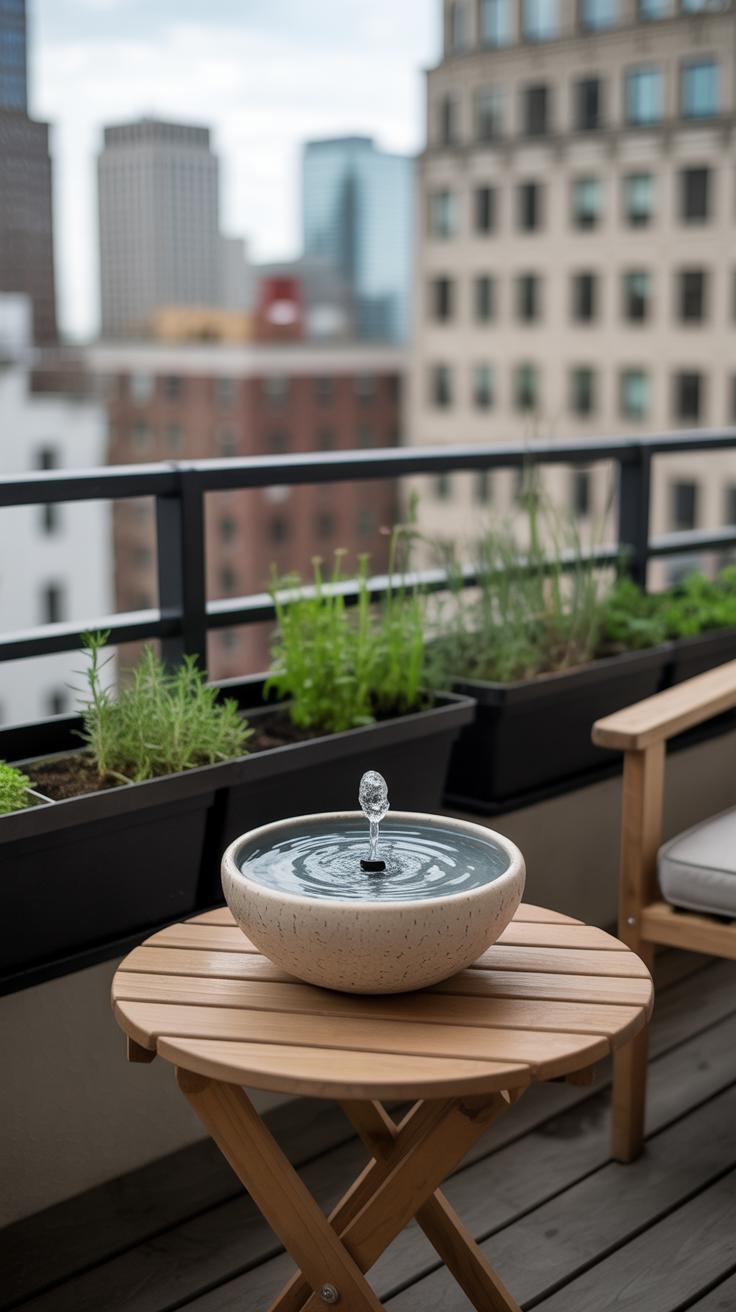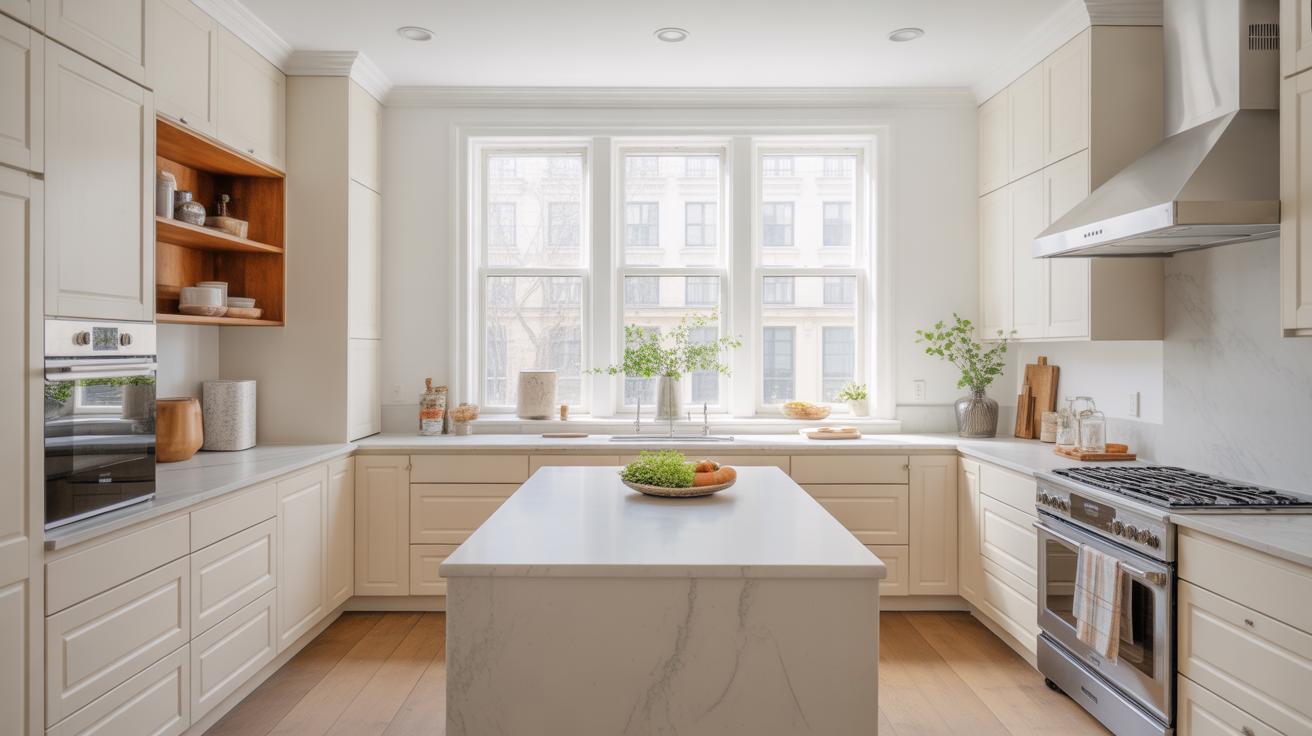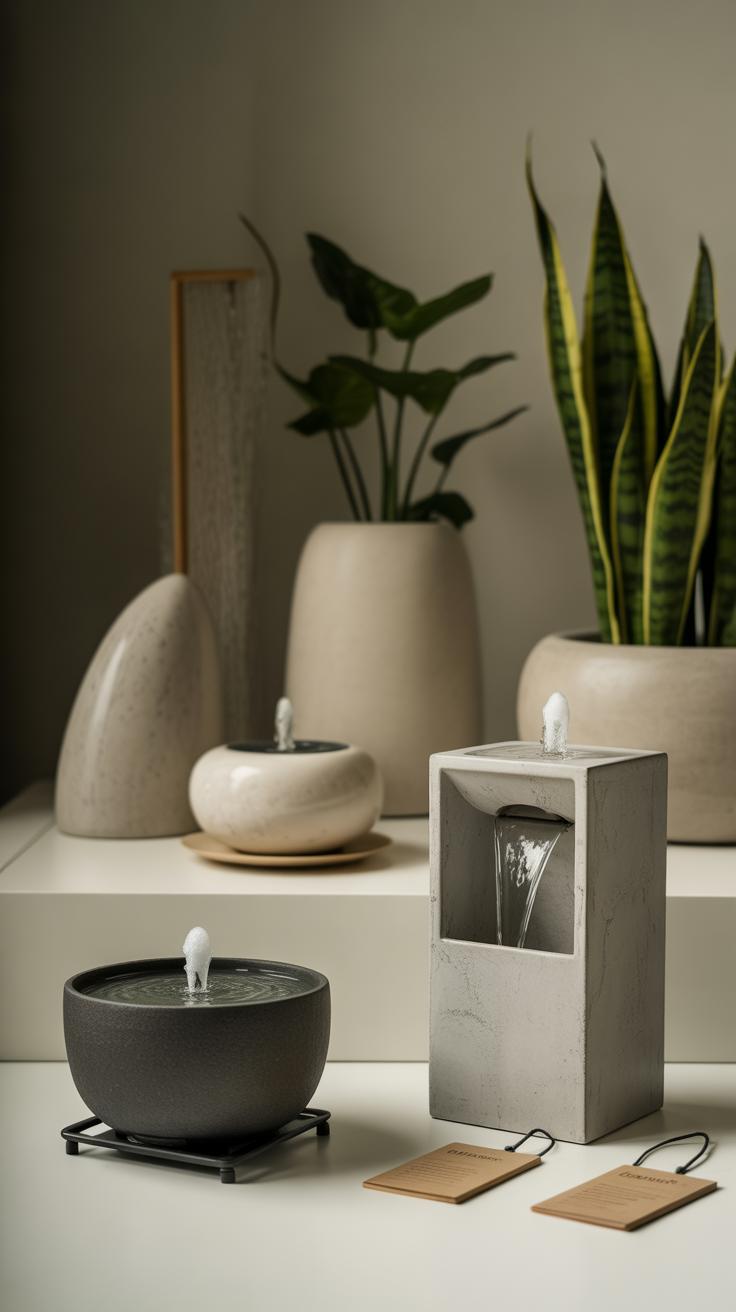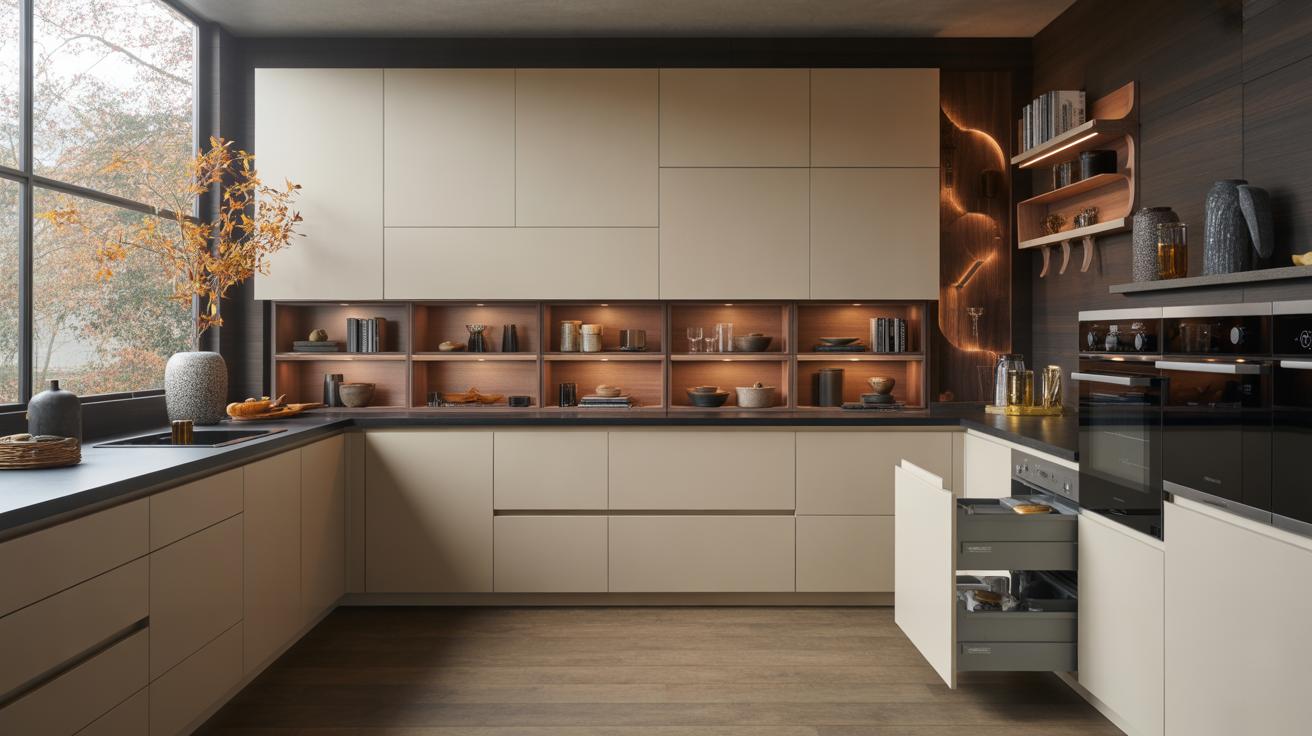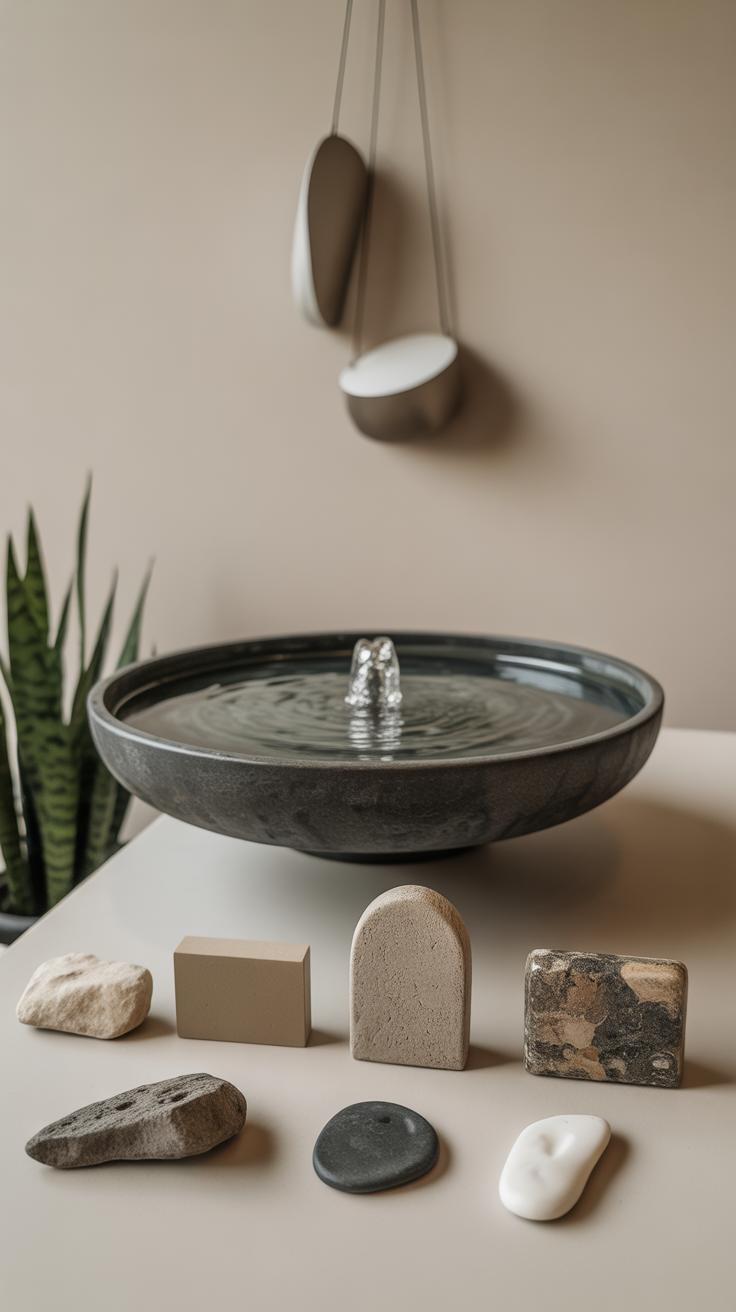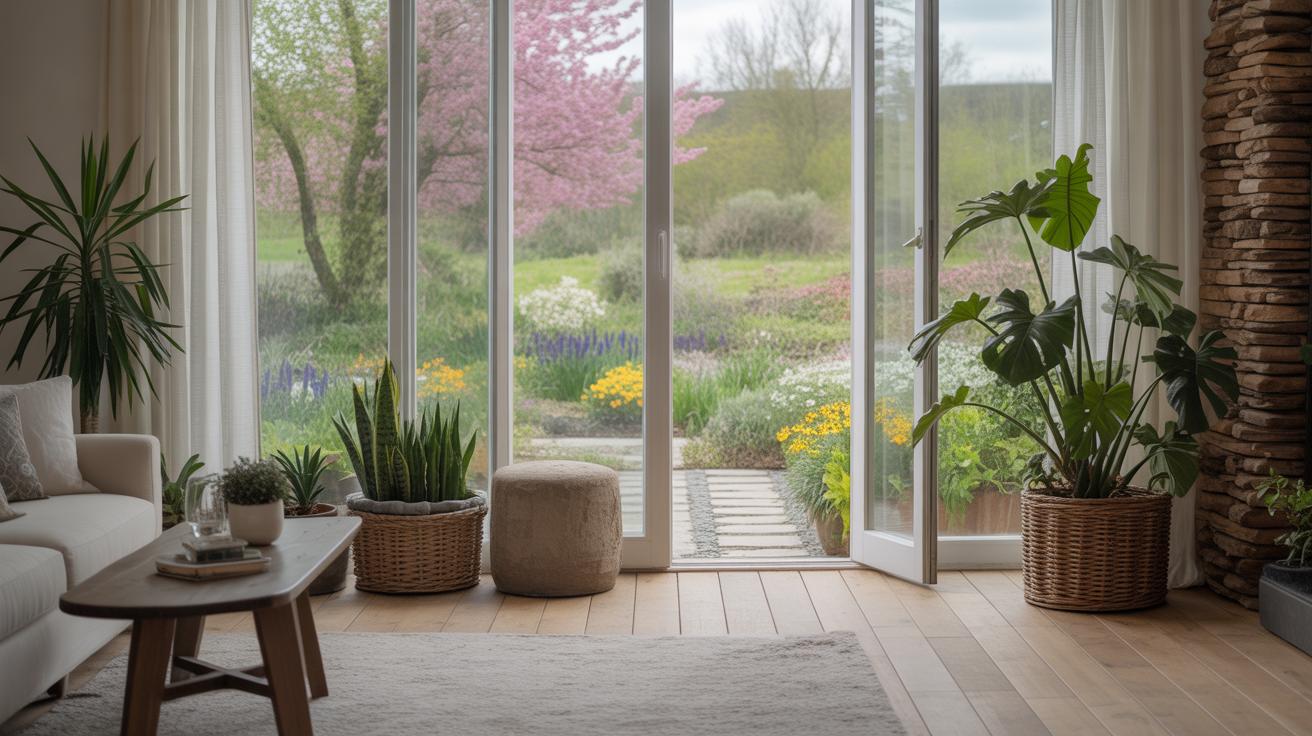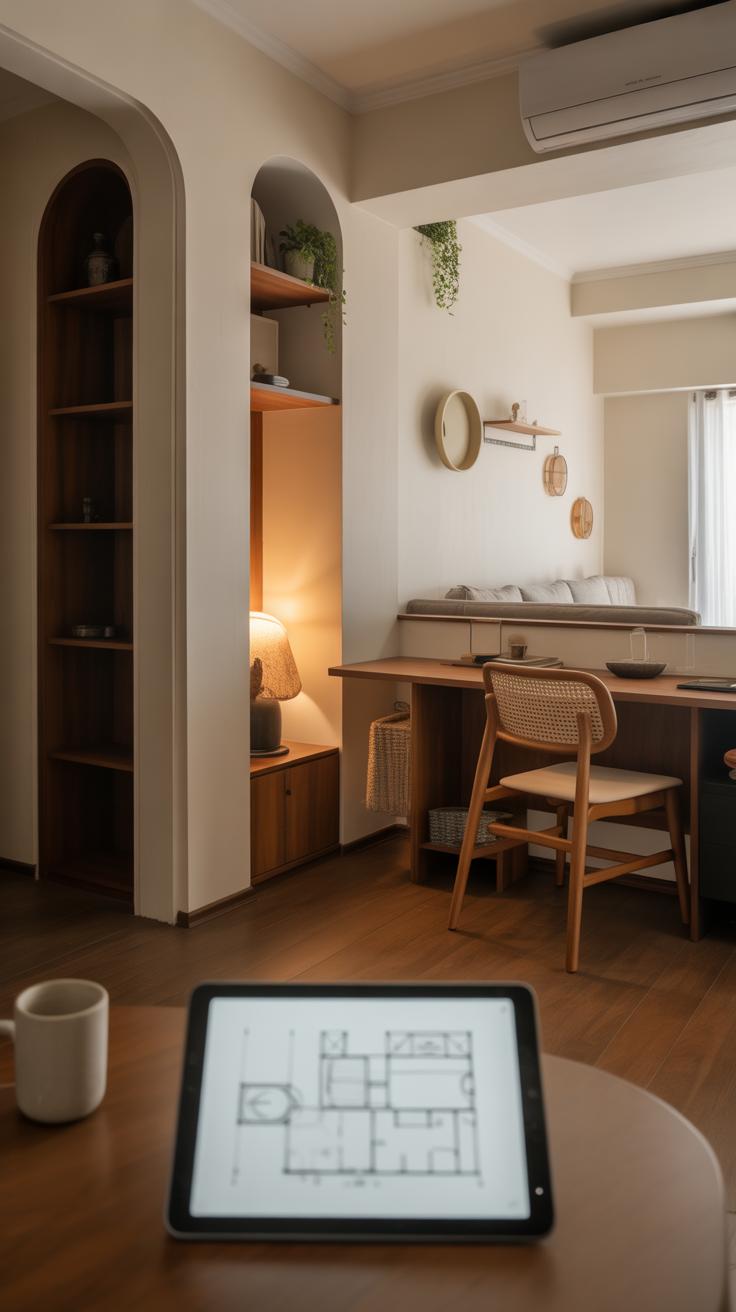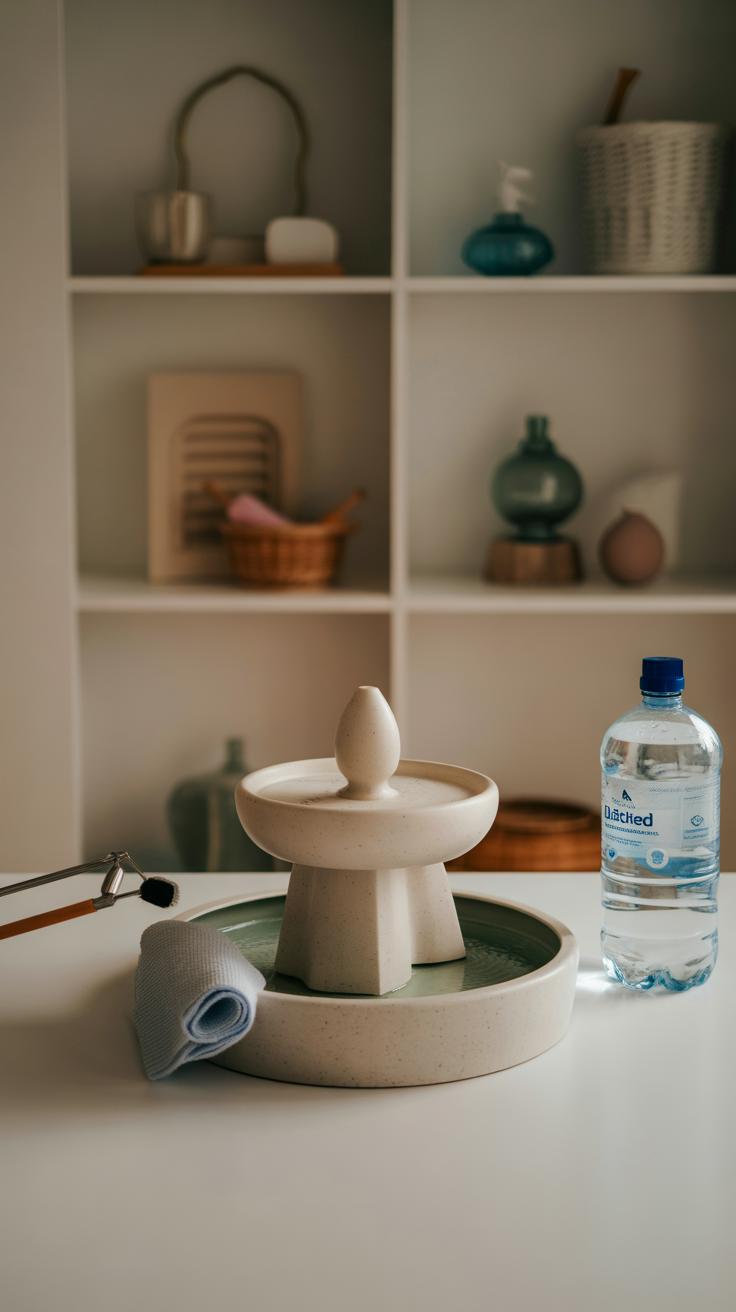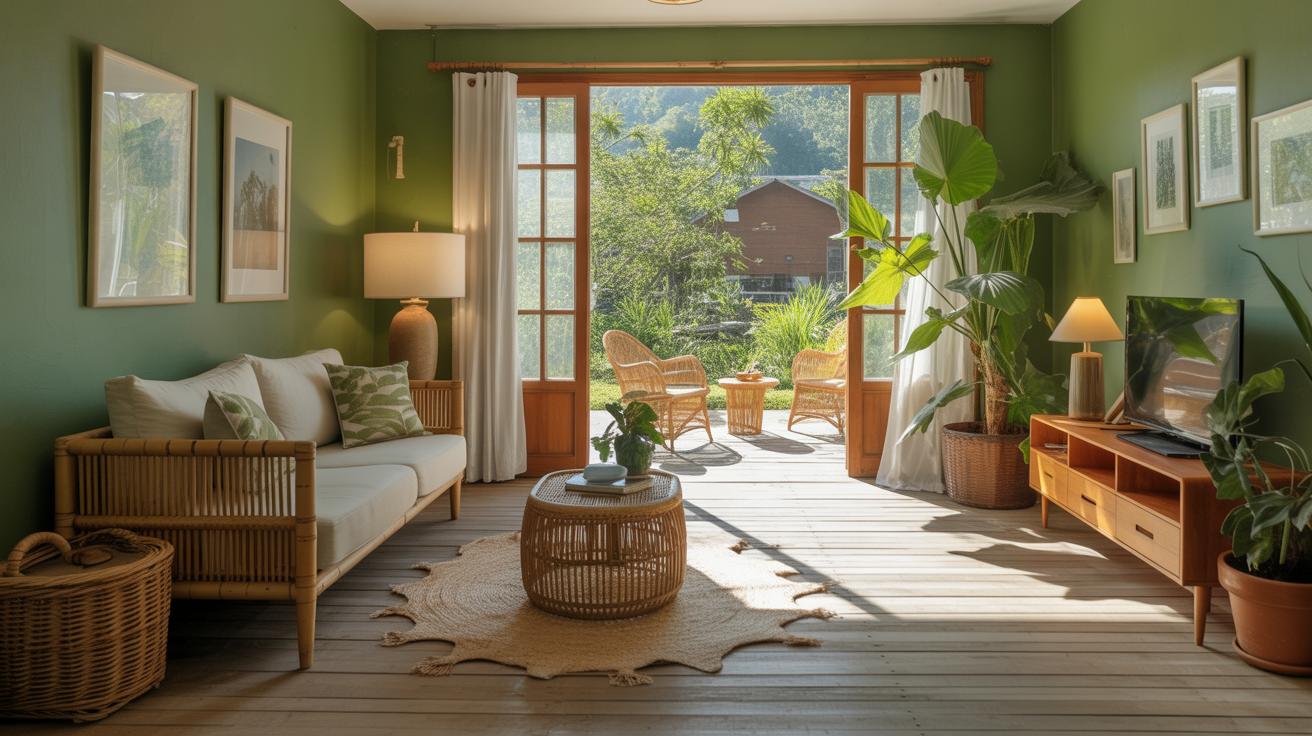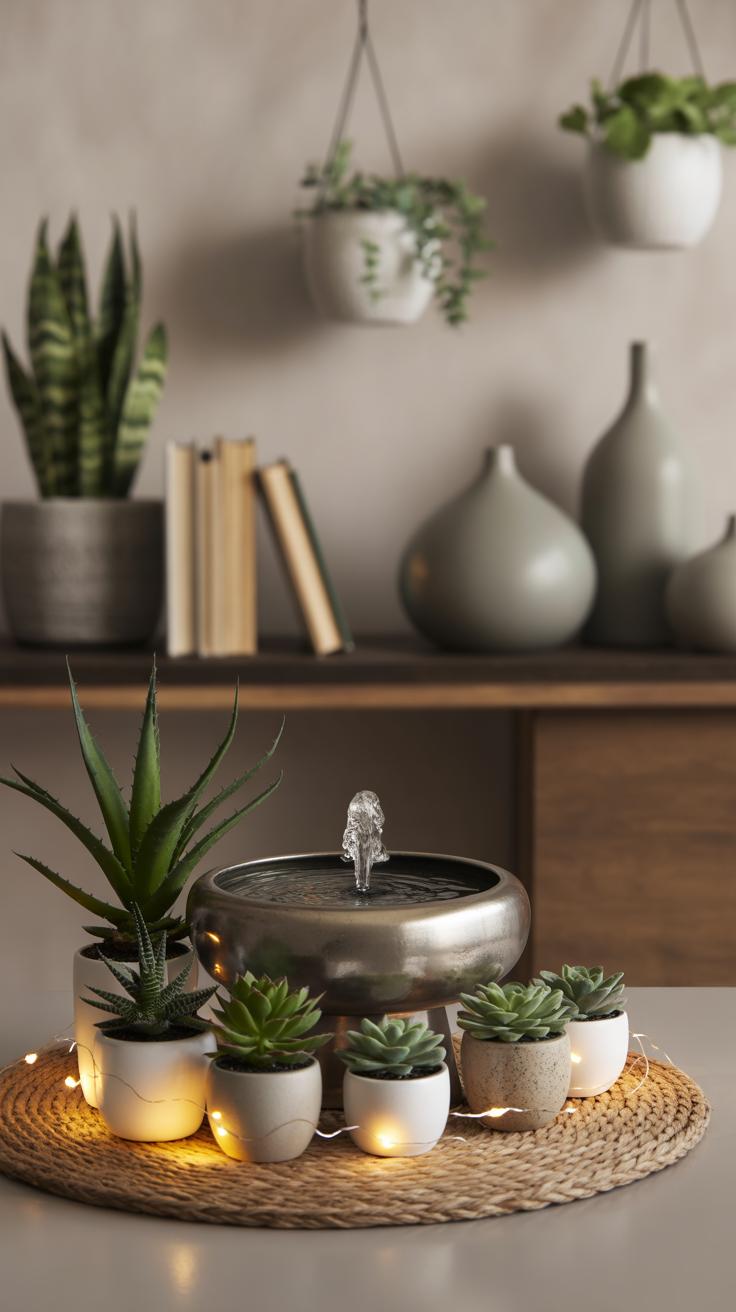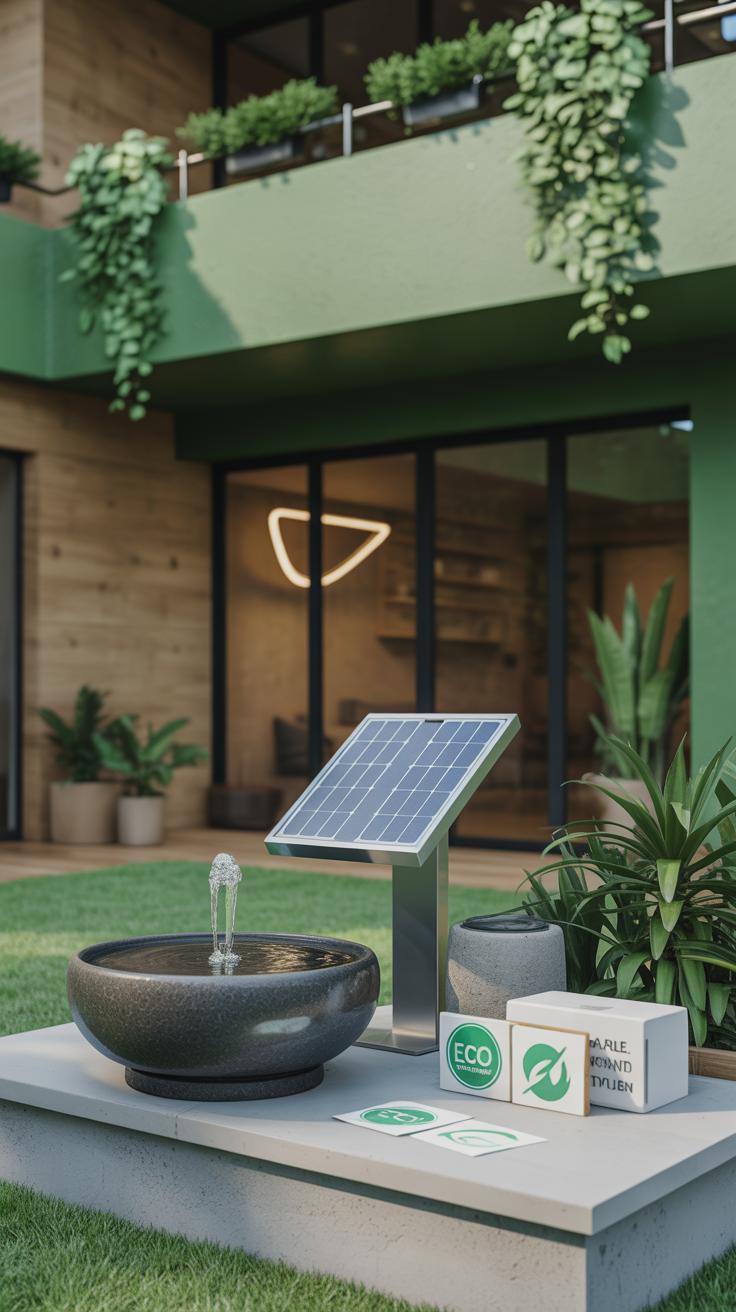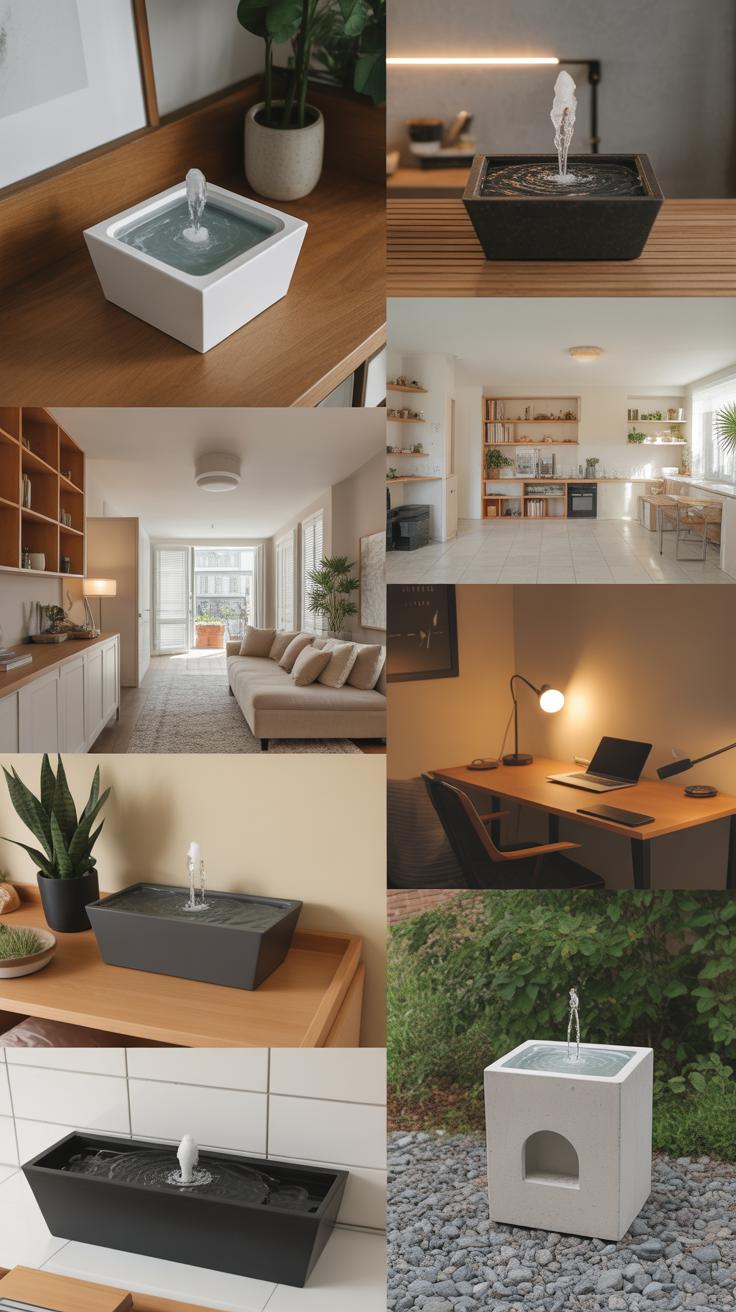Introduction
Small fountains offer a unique way to bring calm and beauty into compact spaces. Whether you have a small balcony, patio, or indoor area, these water features can create a peaceful atmosphere. Water’s gentle sound can reduce stress and make your space special.
This article explores how to select stylish small fountains for limited areas. We will cover designs, placement, installation tips, and maintenance. You will learn how to pick fountains that fit your space and style, and how to keep them running smoothly.
Benefits of Adding Small Fountains to Compact Spaces
Small fountains do more than just fill empty corners—they can change how you experience your space. When you hear the gentle trickle of water, it’s easy to feel a bit calmer, less tense. I’ve found that even the faintest splash can pull your mind away from worries, almost like a mini break for your thoughts. It’s not just quiet water sounds; they seem to mask distracting noises too, making your area feel more peaceful.
Besides calming nerves, small fountains bring a subtle touch of beauty. Placed strategically, they add an element of interest where wall art or big plants might feel too much. The flowing water catches your eye and makes the environment feel alive, without crowding space. It can turn a plain spot into something you might actually look forward to spending time near.
Then there’s air quality. It’s something not many think about, but fountains can raise humidity slightly, which can help in dry rooms. This small change might not solve all air issues, but you might notice the air feels fresher or even less dusty around the fountain. It’s a simple addition that offers more than meets the eye.
- Flowing water sounds aid relaxation and reduce stress
- Visual appeal enhances the overall atmosphere in tight spaces
- Subtle humidity increase can improve air quality
Have you ever considered how these small fountains might shift the energy of your room? Sometimes the tiniest additions make a bigger effect than expected. Maybe it’s worth trying, especially if your space feels a bit too cramped or dull.
Different Types of Small Fountains Available
Tabletop Fountains
Tabletop fountains are compact water features designed to sit on surfaces like desks, shelves, or side tables. They usually have a small basin and a gentle water flow that creates a soothing background sound without overwhelming your space. Because of their size, they’re perfect for spots where floor space is limited but a water element is desired—think about your office desk or a cozy living room corner.
You might find that these fountains can work well near plants or books, blending nature and tranquility in one place. Sometimes I wonder if the simplest designs can invite the most calm, and tabletop fountains tend to follow that pattern. They’re easy to move, so you can experiment with placements until it feels right. Just remember: while they add a touch of elegance, they’re not meant to be a centerpiece but more like a quiet companion for your room.
Wall-mounted Fountains
Wall-mounted fountains attach directly to vertical surfaces, saving precious floor space. For small rooms, this is a practical option because it doesn’t compete with furniture or walkways. They often come in sleek, flat designs that blend well with modern interiors or styles that mimic natural stone for a rougher look.
The appeal here is both functional and visual. The water trickles down in a thin sheet or cascade, creating a vertical line that adds height perception to the room. I’ve noticed these fountains make walls feel alive without cluttering up the space. You can even integrate them into entryways or narrow hallways, where placing a pedestal fountain isn’t feasible. Though they require some installation, the payoff can be a subtle yet striking water feature that almost feels like art.
Materials and Design Choices for Small Fountains
When picking a small fountain, the material plays a big role in both how it looks and how long it lasts. Ceramic is common—it offers a smooth finish and comes in many colors. But, it can chip or crack if knocked over, so it’s a bit delicate. Stone fountains, like granite or slate, feel sturdy and natural. They tend to age well outdoors but might be heavy for small spaces or tabletop setups. Metal options, such as copper or stainless steel, add a sleek, modern feel; on the downside, some metals might weather or tarnish, which you may either love or find frustrating.
Design styles vary widely, too. You might like a modern look, with clean lines and geometric shapes—that’s popular for contemporary homes. Traditional fountains often feature classic tiered arrangements, sometimes with ornate detailing. Then there are natural styles, which mimic rocks and water trickling through a garden stream. Sometimes, the style is just about what you feel drawn to, even if it doesn’t perfectly match your room. Does your decor lean more formal, or casual? Maybe a fountain that blends natural stone with minimalist design fits your vibe.
Choosing the right material also means balancing durability with aesthetics. For instance, ceramic fountains look polished but need careful handling. Stone feels almost permanent but might not suit every interior’s softness. Metal may age with charm or show wear in ways you didn’t expect. Think about where you’ll place the fountain and how often you want to maintain it. I once had a copper fountain that developed a green patina over time. At first, I didn’t like it, but then it felt more authentic—though maybe not everyone would agree.
Matching your fountain to your style involves asking a few simple questions. Is your space modern and sleek, or cozy and eclectic? Do you prefer understated pieces or those that stand out? Small fountains can be subtle accents or statement pieces. Sometimes, playing with contrasts works well too—like a smooth ceramic fountain in a rustic wood room. Don’t hesitate to pick a design that surprises you; a fountain can shift the feel of a room in unexpected ways. What kind of mood do you want your small space to express?
Space Planning and Placement Tips
Choosing the Right Size
Before picking a fountain, take some time to measure your space carefully. It’s easy to think a small corner means a tiny fountain—but size matters beyond mere inches. Consider height, width, and how much room you want around it. For example, a fountain that’s too big can overwhelm a small balcony, making it feel cramped rather than calm. On the flip side, a fountain that’s too tiny might get lost and fail to make the peaceful impact you’re after.
Measure from floor to ceiling and leave a bit of breathing room around the spot. Maybe about a foot or so free space on all sides if you can. That way, you can avoid a cluttered look and still have room for plants or seating nearby. You could try taping out the footprint on the floor or sketching it on a grid—that often helps visualize the scale better than just guessing.
Best Locations for Water Features
Small fountains work well near seating areas where you spend time relaxing. The gentle sound of water can help drown out street noise and encourage calm moments. Corners often go unused but can provide a cozy nook for a vertical water feature that draws the eye upward instead of taking up floor space. I once placed a small stone fountain in the corner of a tiny patio, and it instantly turned that awkward spot into a quiet retreat.
Entryways are another good choice. A fountain near the door sets a welcoming tone and invites a moment to pause. Outdoor or indoor, think about where you naturally pause or gather—these often make the best spots. Just keep in mind practical things like access to a power source and how easy it is to refill or clean the fountain in that spot.
Installation and Setup Guidance
Simple Setup for Tabletop Fountains
Setting up a tabletop fountain usually isn’t complicated. First, find a flat, stable surface where the fountain won’t be easily knocked over. Then, fill the basin with water — just enough to cover the pump completely. It’s okay if you add a little more; just avoid overfilling where water could spill out when the pump starts.
Next, plug in the pump. You’ll hear a soft hum, and soon after, water will start flowing. If the water doesn’t move right away, try adjusting the pump position or check that the intake isn’t blocked by debris. Sometimes, it takes a moment for air bubbles to clear.
Don’t forget to keep the fountain near a power outlet, but if you can avoid running the cord across walkways, that’s better for safety. Once running, watch it for a bit to make sure water flows smoothly without splashing outside the basin. If it’s too noisy or splashing, repositioning the fountain or reducing the water level might help.
Mounting Wall Fountains Securely
Attaching a wall fountain is a bit more involved and requires a sturdy spot on the wall. Before drilling, use a stud finder to locate the strongest support; drywall alone might not hold the weight. If you can’t find a stud, toggles or heavy-duty anchors might be necessary.
Mark where the screws need to go by holding the fountain in place and measuring carefully. It helps to have a level to keep everything straight — although I admit sometimes perfect alignment is a challenge, and nobody will notice if it’s just slightly off.
Once you’ve drilled the holes and inserted anchors or screws, hang the fountain carefully. Double-check that it feels secure by gently pressing or shaking it. Connect the pump cord to a nearby outlet, making sure the wire isn’t pinched or strained.
Don’t rush the process; a shaky installation can cause leaks or damage the fountain. A little patience here saves a headache later. And if you feel unsure at any point, getting a hand or consulting a professional isn’t a bad idea — especially for heavier stone or ceramic pieces.
Maintaining Your Small Fountain
Keeping your small fountain in good shape takes some routine care, but it’s not usually complicated. You’ll want to pay close attention to a few key tasks—like cleaning, monitoring water levels, and taking care of the pump—to avoid problems over time. Skipping these things might cause your fountain to stop flowing smoothly or develop unpleasant smells.
Cleaning and Water Care
Regular cleaning helps prevent algae buildup and residue that can clog your fountain or create odors. A simple approach involves emptying the water every week or so, scrubbing the basin gently with a soft brush, and rinsing thoroughly. Sometimes I forget, and then the water gets murky or slimy, which isn’t fun.
Using distilled or filtered water can slow down mineral deposits, which means less frequent cleaning. Also, avoid soap or harsh chemicals—they can leave residue or harm the pump. If your fountain sits indoors, changing the water twice a week usually works well. For outdoor fountains, you might need to check daily, especially in warm weather.
Pump Maintenance and Troubleshooting
The pump is the heart of your fountain. Keeping it clean is key to avoid clogs or noisy operation. Most pumps have a small intake screen where debris collects. It’s the first thing to check if your fountain’s flow weakens or noises appear. You can take the pump apart (if the manual allows) and rinse it under water, removing any dirt or algae.
Sometimes pumps can be noisy if air gets trapped inside—tapping it gently or priming with water can help. If the water flow drops suddenly, check for blocked tubing or too low water levels. I’ve learned that regular inspection, even if the fountain seems fine, saves headaches later. But be patient; pump issues might not always present clear symptoms at first.
Combining Small Fountains with Plants and Decor
Small fountains bring quiet motion and sound to compact spaces, but pairing them with plants and decor creates a fuller experience. Surrounding a fountain with greenery softens its edges and blends it naturally into your space. You might try grouping a low-maintenance fern or peace lily close to the water—both handle moist conditions well and add rich texture.
Plants such as spider plants, hostas, and calatheas also do well near water features. They seem to thrive with the humidity small fountains create. But it’s not just about plants—decor items can elevate the look further. Smooth river stones placed around the base offer a simple, grounding touch. Small figurines, maybe a bird or a simple sculpture, can add personality.
Lighting deserves a mention here, too. Soft LED lights or solar-powered spots can highlight the fountain’s flow beautifully as evening sets in. Just be cautious not to overdo it; the water should remain the star. When mixing all these elements, ask yourself: what mood do you want to set? Calm and minimalist? Natural and lush? The interplay between plants, stones, and lights can shift things unexpectedly.
Energy Efficiency and EcoFriendly Tips
Choosing Energy-Saving Pumps
When picking pumps for your small fountain, look beyond just the size. Pumps that consume less electricity but still deliver enough water flow are key. You might find models labeled “low wattage” or “energy-saving,” but what really matters is matching the pump’s capacity to your fountain’s size. Too strong a pump wastes power; too weak won’t circulate water well.
Brushless motors often use less energy and last longer, though they can cost a bit more upfront. I’ve noticed some pumps advertise adjustable flow rates, which lets you dial in just the right pressure without extra energy use. It’s a small tweak but can lower your electricity bill over time.
Using Sustainable Fountain Materials
Choosing fountain materials also impacts the environment. Look for natural stones, recycled glass, or sustainably harvested wood instead of plastics, which might leach chemicals or degrade faster. Sometimes, older or vintage pieces can become charming fountains with just a little reinvention—repurposing is both creative and green.
Water conservation matters too. Small fountains can recirculate water, but you can further minimize waste by covering the basin to reduce evaporation or placing fountains in shaded spots. Maybe try adding native plants nearby to help keep humidity steady and water loss down. That way, your little fountain feels fresh without frequent refills.
Inspirational Ideas and Practical Uses
You might not expect small fountains to make a big difference in tight spaces, but they really can. Think about apartments where every inch counts. Some people place compact fountains on narrow shelves or window sills. The gentle sound of trickling water can mask city noise or create a little pocket of calm. It’s like having a tiny getaway spot without leaving home.
In offices, a small fountain on the desk or a side table often changes the vibe. It brings a subtle sense of calm that helps with focus or stress relief. I’ve seen coworkers get unexpectedly fascinated watching the water flow, breaking the monotony of long work hours. Some even use them near plants to add a little humidity, which is a neat bonus.
Balconies and patios, though small, really benefit from the right water feature. Imagine a fountain tucked into a corner, paired with potted plants. It makes the space feel more inviting. Even a petite tier fountain can serve as a centerpiece if you keep the surrounding clutter-free. You could place them on sturdy stools or low tables to create layers that don’t overcrowd the space.
Indoors, fountains often find their place in entryways, welcoming guests softly. Or maybe in a quiet nook where you want to unwind after a long day. Bedroom corners or reading areas gain a kind of soothing presence. At times, though, the constant sound might feel a bit much—not everyone wants water sounds flowing all the time, so testing placement helps.
- Try small wall-mounted fountains in spaces where floor or table space is tight.
- Use fountains with adjustable flow to control noise level depending on your mood or time of day.
- Balance the fountain with minimal decor to avoid a crowded feel.
- Combine fountains with natural elements—stones or plants—to create a small oasis.
Have you experimented with water features in small spaces yet? Sometimes the simplest addition can shift the whole atmosphere more than expected, though it might take a bit of tweaking to get it just right.
Conclusions
Small fountains add charm and tranquility to compact spaces. By choosing the right style and size, you can improve the look and feel of your area. Think about your space, and pick a fountain that matches your taste and needs.
Regular care will keep your fountain looking good and working well. Enjoy the soothing sound of water and the fresh ambiance it brings. With small fountains, even the tiniest spaces can become peaceful retreats.

